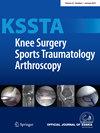The metaverse in orthopaedics: Virtual, augmented and mixed reality for advancing surgical training, arthroscopy, arthroplasty and rehabilitation
Abstract
Purpose
The metaverse and extended reality (XR), which includes augmented reality (AR), virtual reality (VR) and mixed reality (MR), are transforming orthopaedic surgery by enhancing training, procedural accuracy and rehabilitation. However, a literature review of these new virtual tools is lacking. The purpose of this narrative review is to summarise available evidence about the metaverse and discuss current and future clinical applications.
Methods
A narrative review of the current literature was performed for studies evaluating XR tools and their respective clinical and educational utility. Studies from all orthopaedic subspecialties were eligible for inclusion. The XR tools evaluated in each study were categorised according to the reality spectrum and future research or clinical applications were discussed.
Results
XR is a technological spectrum that includes AR, VR and MR to create immersive and interactive surgical training environments. VR-based simulators may improve surgical education by allowing trainees to refine their skills in a risk-free setting. AR may enhance intraoperative guidance and has been studied within orthopaedics to improve implant positioning accuracy and reduce complications in procedures including arthroscopy and total joint arthroplasty. In rehabilitation, AR and VR have been implemented to facilitate patient engagement and adherence, promoting functional recovery through gamified therapy and remote telerehabilitation.
Conclusions
There has been a paradigm shift in orthopaedic care in which digital tools are integrated with patient care to optimise patient outcomes. However, challenges to the widespread implementation of promising XR technology include high costs, steep learning curves and limited clinical validation. Ethical concerns, including data security and patient privacy, further complicate its use in clinical settings. Future research must focus on cost-effectiveness, standardisation and improving accessibility to ensure seamless integration into clinical practice.
Level of Evidence
Level V.





 求助内容:
求助内容: 应助结果提醒方式:
应助结果提醒方式:


